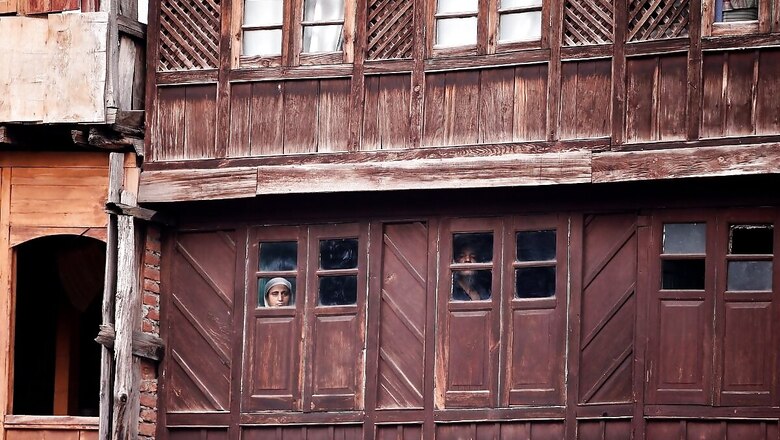
views
In India’s map, Gilgit-Baltistan is on the very top, precisely on its head. This region has been under the effective control of Pakistan since 1947 and now Islamabad is planning to declare this area its fifth province. The Narendra Modi government has objected to this and in many parts of the world, including Delhi, protests are being held against Pakistan.
The princely state of Jammu and Kashmir became a part of India because of a decision made by the-then ruler of the region, Maharaja Hari Singh, on October 26, 1947. His birth anniversary was on Wednesday. Hari Singh was born on September 23, 1895. It is a coincidence that many Hindu organisations staged massive protests in Delhi against Pakistan on the day. The reason was the move of Imran Khan government’s latest move on Gilgit-Baltistan.
When Hari Singh in 1947 merged his princely state into India, Gilgit-Baltistan was a part of it. Naturally, India is unwilling to put up with Pakistan declaring the area its fifth province. Pakistan, which has been asking internationally for a plebiscite in Jammu and Kashmir for a resolution of the vexed issue, now stands exposed. Its international stance on this issue is starkly against the position that it has been holding till now. Pakistan has been demanding a plebiscite in J&K for the past seven decades.
If one looks back at history, the British had handed over the strategically important Gilgit-Baltistan area to Hari Singh before August 15, 1947, because colonial rule had come to an end and this also ended all the arrangements that the princely states had with the British government. In such a scenario, the 60-year lease of this area the British had inked with the Maharaja in 1935 no longer had any validity.
But as soon as Hari Singh declared that J&K had decided to merge with India, on October 26, 1947, the British made a very cunning move which also included the Governor General of independent India, Lord Mountbatten, who wielded great influence over the-then Prime Minister of India, Jawaharlal Nehru. Mountbatten’s wife Edwina played a key role in this.
According to the provisions of the treaty that Hari Singh had with the British Raj, he was free to choose either India or Pakistan. But when Hari Singh decided to throw his lot with India, Mountbatten made a sinister move and raised the issue of plebiscite which means this could be done only after such a poll was held and the people of J&K were given the opportunity to express their will. Sardar Patel had not agreed to it but Nehru made a mistake and accepted the condition of plebiscite. India took this matter to international forums but the issue of J&K got stuck in the maze of international politics. This has also led to three wars between India and Pakistan. In 1999, Pakistan intruded into the Indian territory of Kargil but had to retreat after a brief high-altitude war. However, the vexed issue of J&K remains unsolved.
Plebiscite has not taken place in Jammu and Kashmir till today, even after 73 years of Independence. But Pakistan itself is to blame for this. One of the conditions of plebiscite was that Pakistan had to vacate the area that it had captured. But it did not comply, and rather tried to change the geography of that region by asking tribal people to occupy this area illegally.
In 1947-48, Pakistan named the area it occupied Azad Kashmir, India calls Pakistan-occupied Kashmir. But then it cleverly separated the Gilgit-Baltistan area from this region and renamed it the Northern Areas.
Strategically and diplomatically, this region is very important. On the one side of it is Afghanistan while on the other side it is bound by the erstwhile Soviet Union. Britain had taken this area on lease from the king of J&K to stop the advance of Russia under the Czar and that is why it did not want this region to remain with India. It thought India could align with Soviet Union strategically, which it was not in favour of.
The-then security in-charge of Gilgit-Baltistan area and commander of the Gilgit Scouts force, Major William Alexander Brown acted treacherously with Hari Singh on the direction of his masters. Hari Singh was handed over the control of Gilgit-Baltistan officially in July-August 1947, and he sent Brigadier Ghansara Singh as governor of Gilgit and everything was fine till then. But as soon as Major Brown came to know that Hari Singh had decided to merge his principality with India, the British officer played out his sinister design.
With the help of his junior officers of the Gilgit Scouts, Captain Mathieson and Subedar Major Babar Khan, Major Brown captured and put Brigadier Ghansara Singh in confinement in Gilgit Residency and on November 2, 1947, unfurled the flag of Pakistan on Gilgit. After two weeks, Pakistan appointed Sardar Mohammad Alam as its political agent and took over control of this area and he was suitably aided by Major Brown who had decided to help Pakistan instead of Hari Singh. This despicable act by Major Brown crossed all limits of treachery. Brigadier Ghansara Singh was later sent as a prisoner to Pakistan and he was able to return to India on January 1, 1949, after India fought its first battle with Pakistan in 1947-48.
Brigadier Ghansara Singh died on January 22, 1991, while Major Brown, who had stabbed India and Hari Singh in the back, died in 1984. Major Brown, at the fag end of his life, had accepted that he had betrayed Hari Singh. But he was suitably rewarded by Pakistan for his act and honoured with the title of Sitara-i-Imtiaz posthumously.
Unfortunately, the first government of independent India did not behave honourably with Hari Singh who had thrown his lot with India. Hari Singh, who had decided to merge his principalities with India, was asked by Nehru in 1949 to leave J&K at the behest of Sheikh Abdullah. Hari Singh did not get a chance to return alive to the Amar Palace in which he signed the Instrument of Accession with India. He died on April 26, 1961, in Bombay.
The great-grandfather of Hari Singh, Gulab Singh, was the one who had established the Dogra principality in Jammu, and before Kashmir he had taken control of Gilgit and Baltistan with the might of his sword around 1835-36. He gained control of Kashmir after an agreement with the East India Company. It has been a historic resolve of India to take back Gilgit-Baltistan along with other Pakistan-occupied areas. When the Indian government got wind that Pakistan was going to declare Gilgit-Baltistan as its fifth province, Prime Minister Modi expressed his deep anguish and opposition to this.
The Modi government made its intentions about Gilgit-Baltistan clear in Parliament during the discussion on the Citizenship Amendment Act (CAA) in December 2019. In this Act, India has considered Afghanistan as its immediate neighbour and on the basis of it, it seems, Gilgit-Baltistan has been considered an integral part of Indian territory which is illegally occupied by Pakistan for the past seven decades. That precisely is the reason why the religious minorities coming from Afghanistan have been given priority in providing citizenship status. While replying during the discussion on this amendment, home minister Amit Shah had shown his resolve to take back this area from Pakistan as soon as possible.
It’s obvious that Pakistan knows this intention of India. That is why it is amending its own policies. To keep the J&K pot boiling on the international arena, it has given PoK a special status and has allowed a separate constitution, President and Prime Minister for it, even if all this is sham. Earlier, Gilgit-Baltistan was also part of this area, but later in 1949, Pakistan renamed it the Northern Areas and started direct rule over it. After six decades, in 2009, it again changed the name of the area, which was known as Gilgit during the time of Hari Singh, to Gilgit-Baltistan, .
The J&K principality that Hari Singh handed over to India in October 1947 had an area of 2,22,236 square kilometres. Presently, only 101,437 square kilometre area is under Indian administrative control and 78,114 square kilometre is under illegal control of Pakistan, including Gilgit-Baltistan. Around 19 per cent area (around 42,685 square kilometre) of J&K is controlled by China which also includes Aksai Chin, and also 5,180 square kilometre, which was previously part of Gilgit-Baltistan. Pakistan had given this area to China in 1963 under a treaty which India strongly objected to.
The Gilgit-Baltistan area that is under Pakistan is five times larger than the region of J&K which Pakistan calls Azad Kashmir. In this scenario, Pakistan’s persistent endeavour to increase its control over Gilgit-Baltistan has behind it many factors including one that is China.
China not only controls a large part of Gilgit-Baltistan but a large part of the economic corridor, CPEC, which it is establishing, passes through this region. Naturally, China wants Pakistan to have strong control over this area so it does not face any impediments there.
But, the task is not easy for Pakistan. It has been illegally controlling this area for the past seven decades, but it has not been able to ameliorate the condition of the inhabitants. Rather, it has exploited the people in this area. The region is rich in minerals which have been milked by Pakistan, but it has not passed on any benefits to the locals. That is why the residents keep opposing the policies of Pakistan, with the protests turning violent on many occasions.
To tighten its grip over this area, Pakistan has tried to change its demographic profile. It has been doing the same in Balochistan too. In 1947-48, when Pakistan illegally captured Gilgit-Baltistan in connivance with British officers, the area had a large number of Shia and Ismaili Khoja Muslims. But, in the past five decades, Pakistan has brought Sunni Muslims from other areas, who are radically different from the original inhabitants, and transplanted them here.
Kashmiri leaders and Pakistan have been raising a hue and cry over implementing Hereditary State Subject Rule in Jammu and Kashmir and have been demanding that all the rights be given only to the inhabitants of the region. But Pakistan itself ended the State Subject Rule in Gilgit-Baltistan to have more control over the region. This means that now people from any area can come to Gilgit-Baltistan and reside there permanently. As a result of this, while in 1947, this area of Gilgit-Baltistan had around 85 per cent Shia and Ismaili Muslims, the number is now less than 50 per cent.
A large number of Sunni Muslims are being brought into Gilgit-Baltistan from Pakistan’s Punjab province. This is reflected in the demographic data of the country. India’s former High Commissioner to Pakistan, SK Lamba, has written in an article that between 1998 and 2017, Pakistan’s population increased by 56 per cent, while in Gilgit-Baltistan, the population doubled. This happened under the rule of General Zia who separated Gilgit-Baltistan from the Kashmir issue and then people were brought from outside into the region. Pervez Musharraf too played a key role in this. When the local people opposed this act of deliberate demographic change, as a conduit of Zia at the time, Musharraf crushed that opposition by using force.
Now, after inducing demographic changes in Gilgit-Baltistan systematically, Pakistan is plotting to get it fully integrated into the Islamic Republic. Like Punjab and Sindh, it is trying to make it a province of Pakistan, and after accomplishing this Imran Khan intends to hold elections there in November this year.
As is obvious, India will not accept that. The Modi government has been persistently opposing the move. India has exposed Pakistan on each and every international forum as a fountainhead of terrorism and has alleged that it is introducing administrative changes in those areas which it is illegally occupying. Voices of protest are emerging from the Indian populace and Gilgit-Baltistan too is on the boil. People have taken to the streets in Delhi to London to Birmingham in a bid to express their anguish over Pakistan’s designs.
The best way to redress the injustice meted out to Hari Singh will be that India starts taking those areas under its control which are occupied by Pakistan and China. The Indian people are now much more aware of the issues that pertain to Jammu-Kashmir and Ladakh and the Modi government’s attitude has become more aggressive. The dilution of Article 370 and standing up to the might of China in Ladakh are bold moves on the part of the Modi government which must be reassuring for the country.
The challenge is big but there is hope. It is essential that the designs of Pakistan and China do not fructify and one day people sees the tricolour going up in Gilgit-Baltistan. Only this can be a true tribute to Hari Singh on his birthday.
There are people who see from the other side of the border the development work being done in Jammu and Kashmir and wish to be freed from the control of Pakistan. And they are raising their voices as well. Just a few days back, the new L-G of Jammu and Kashmir, Manoj Sinha, announced a huge economic package for the Union Territory and echoes of his announcement were heard in Gilgit-Baltistan as well. The people of Gilgit-Baltistan can now compare their own status with that of J&K residents. They must also be rueing the fact that just seven decades ago, they were part of this fortunate state of India called Jammu and Kashmir. It may be late, but once India takes control of this area, their wishes will be fulfilled. Everybody wants this – both the Modi government and the people of India.










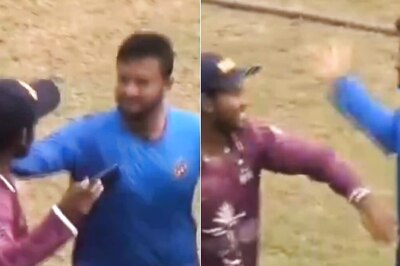

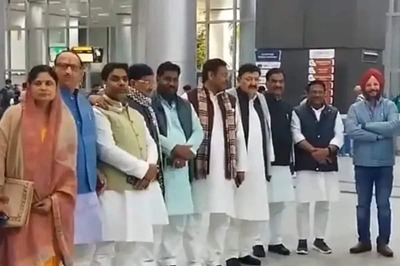

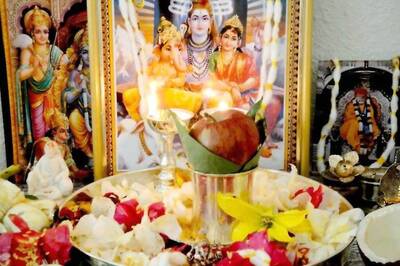
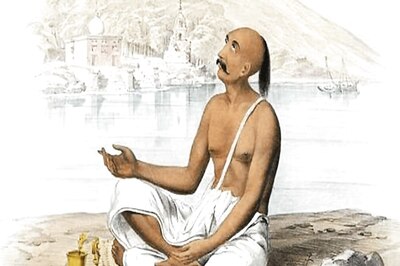

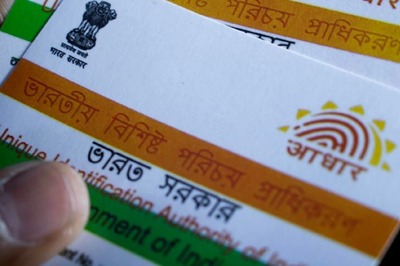
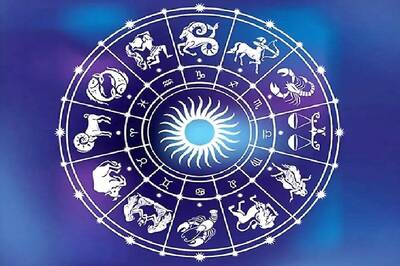
Comments
0 comment